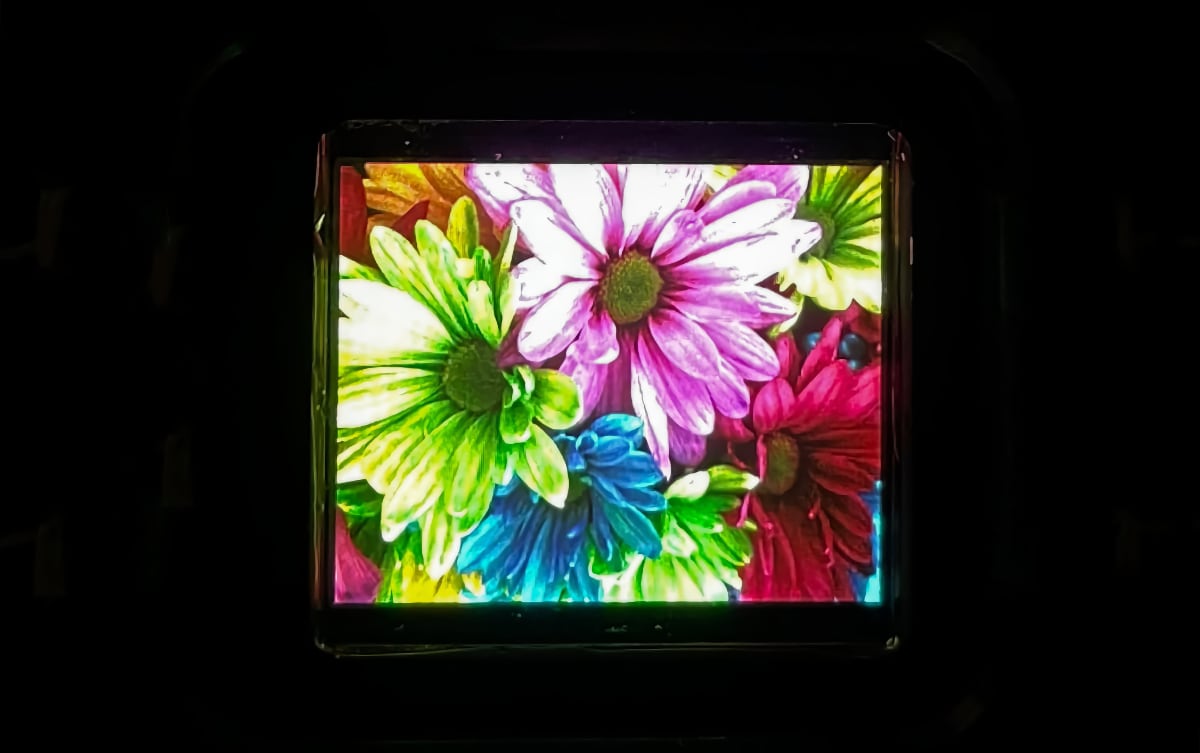At CES 2025, we got a glimpse of the future with further OLED advancements and entirely new display technologies such as QD-EL (NanoLED) and ultraviolet QD micro-LED.
We have already covered what LG Display and Samsung Display have planned for WOLED and QD-OLED in 2025, including a new 4-layer WOLED TV panel and an improved QD-OLED TV panel.
These mark significant steps for the two main OLED panel types used in TVs but a third alternative is emerging from China that could shake up the market; inkjet-printed RGB OLED from TCL that is entering mass-production – initially for monitors – as we speak.
What's next for OLED?
What else lies ahead for OLED? Based on what we have seen and heard, the technology is nowhere near its limits. In fact, since the arrival of QD-OLED in 2021 – intensifying competition between LG and Samsung – and China's growing focus on smaller OLED panels, innovation has only accelerated.
New breakthroughs such as blue PHOLED (phosphorescence) and plasmonics, along with new manufacturing methods, promise even better and brighter OLED displays through improved energy efficiency. While CES 2025 did not showcase any "dream OLED" prototypes, there were still key advancements that will propel OLED forward and expand it to new product categories.
Samsung Display teased a 27-inch 5K QD-OLED panel with a pixel density of 220 pixels per inch (ppi), up from 160ppi in the 27-inch 4K panel that is launching this year. At these pixel densities, Samsung could theoretically produce 65-inch or even smaller QD-OLED TV panels with 8K resolution, if it wanted to. As you know, WOLED already exists in 8K, though remains prohibitively expensive and lacks the latest innovations such as the new 4-layer panel.
Another OLED innovation was UT OLED, or ultra-thin OLED. These were exhibited by Samsung Display. LG Display was not exhibiting at CES this year.
Designed for handheld devices, UT OLED displays are impressively thin, potentially paving the way for paper-like future devices.

Spot the OLED panels. Photo: FlatpanelsHD

Here they are. Photo: FlatpanelsHD
Samsung also provided a glimpse of the future of glasses-free 3D with a prototype OLED panel. While current glasses-free 3D LCD monitors are decent, this prototype takes it two steps further.
However, higher resolution will be necessary to fully realize the potential for this type of glasses-free 3D technology.
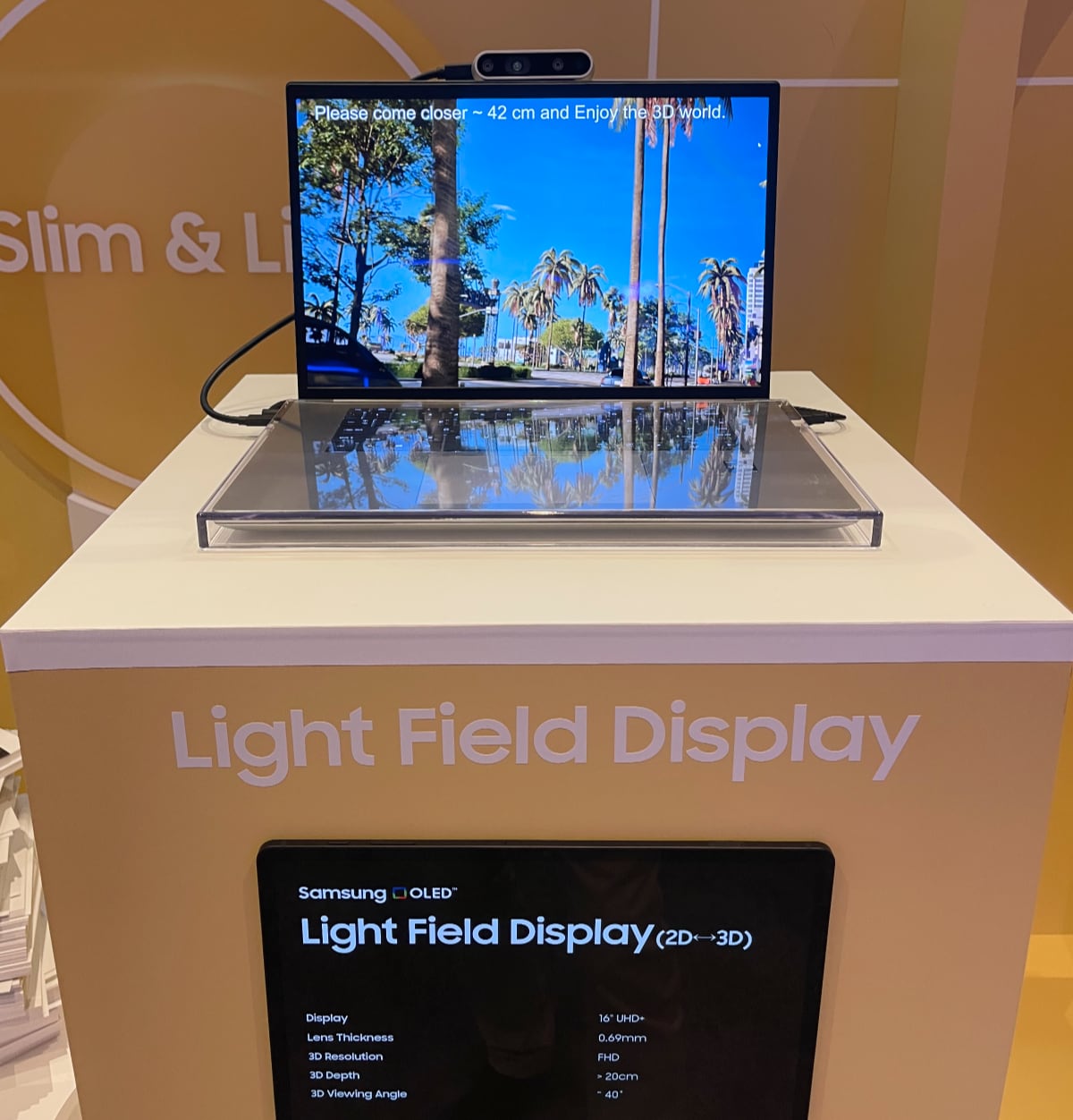
Samsung Display's glasses-free 3D OLED prototype. Photo: FlatpanelsHD
Micro-OLED for VR – not LCD
We saw micro-OLED, or OLED-on-Silicon, from Samsung Display with a 4000ppi resolution and over 10,000 nits of brightness. This panel could be implemented in future VR headsets to better compete with the Apple Vision Pro, the first to use extremely pixel-dense micro-OLED displays.
Also read: First look at Apple Vision Pro: A video revolution
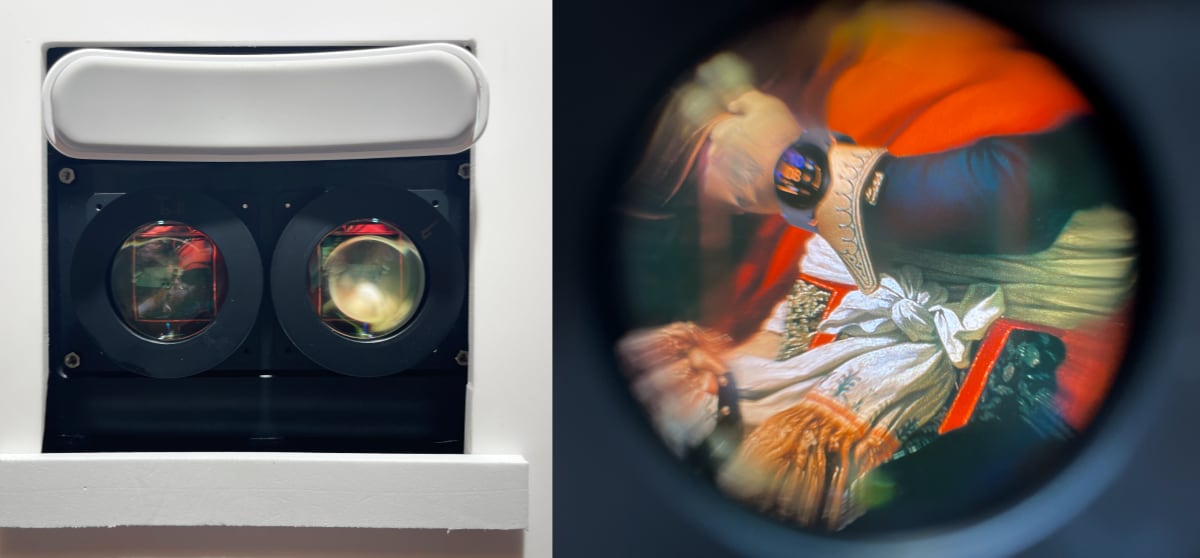
Samsung Display's 4000ppi Samsung micro-OLED panel for VR headsets. Photo: FlatpanelsHD
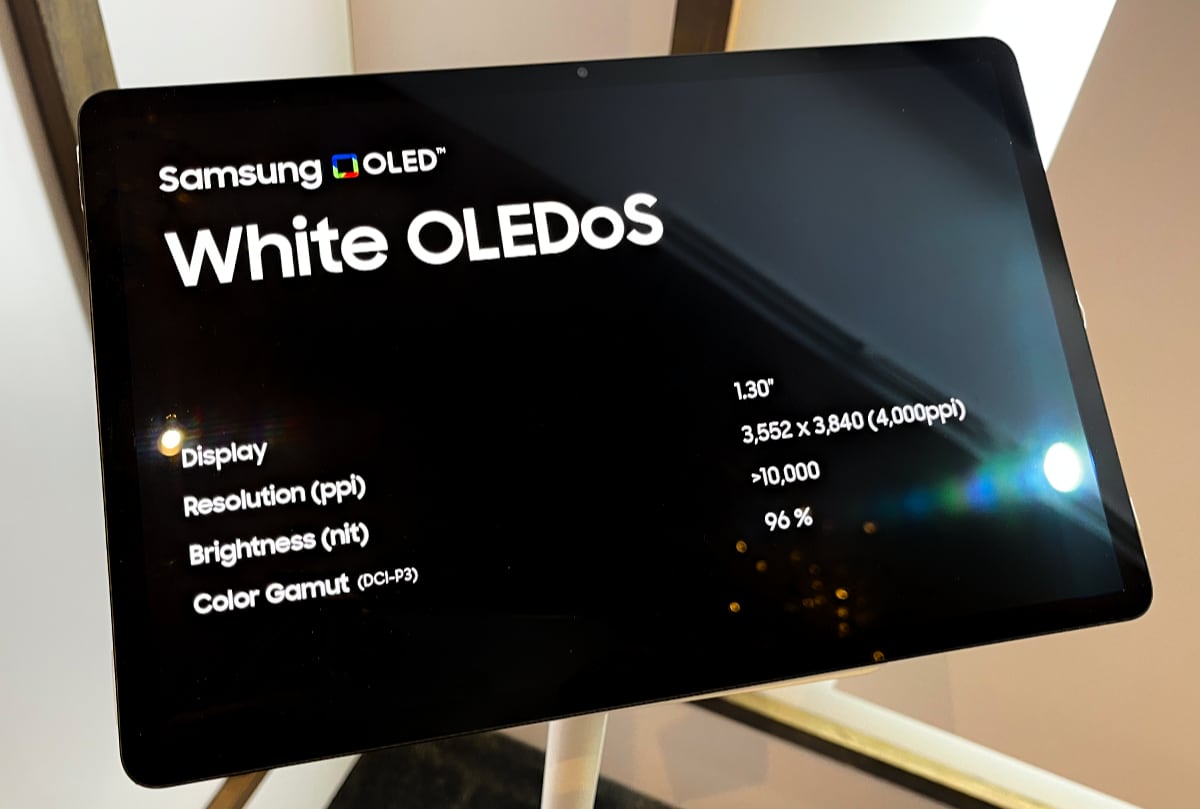
Samsung Display's 4000ppi Samsung micro-OLED panel for VR headsets. Photo: FlatpanelsHD
Speaking of VR, we briefly tested the new Pimax Super Crystal, featuring high-resolution LCD panels with miniLED zone dimming. Unfortunately, the experience was underwhelming. The image lacked contrast, colors lacked purity, and the visuals felt more like peering into a dome than an expansive VR world. It simply was not a believable or immersive experience.
This reinforced our long-standing belief: LCD has no place in VR headsets. Until the most critical component – the display strapped in front of your eyes – matches or surpasses the micro-OLED in Apple Vision Pro, VR adoption will remain limited. As such, in our view, Meta's Quest is doing more harm than good for the VR market. Meanwhile, micro-LED for VR still suffers from a screen-door effect due to its low pixel aperture ratio.
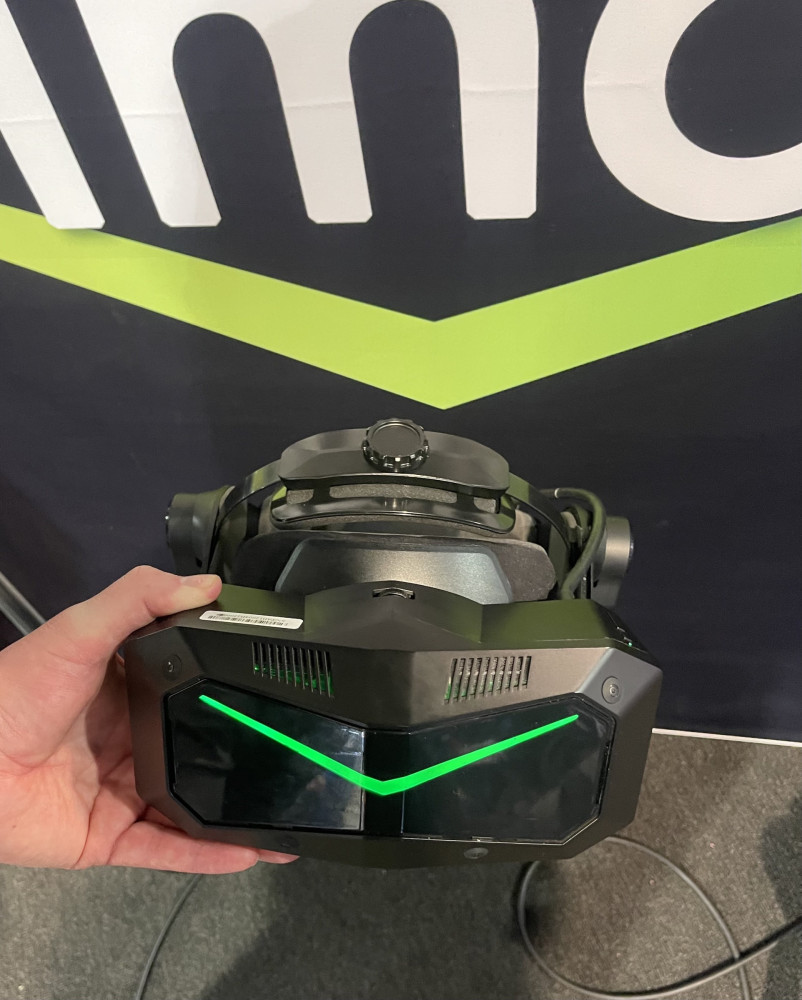
The Pimax Super Crystal with miniLED LCD panels. Photo: FlatpanelsHD
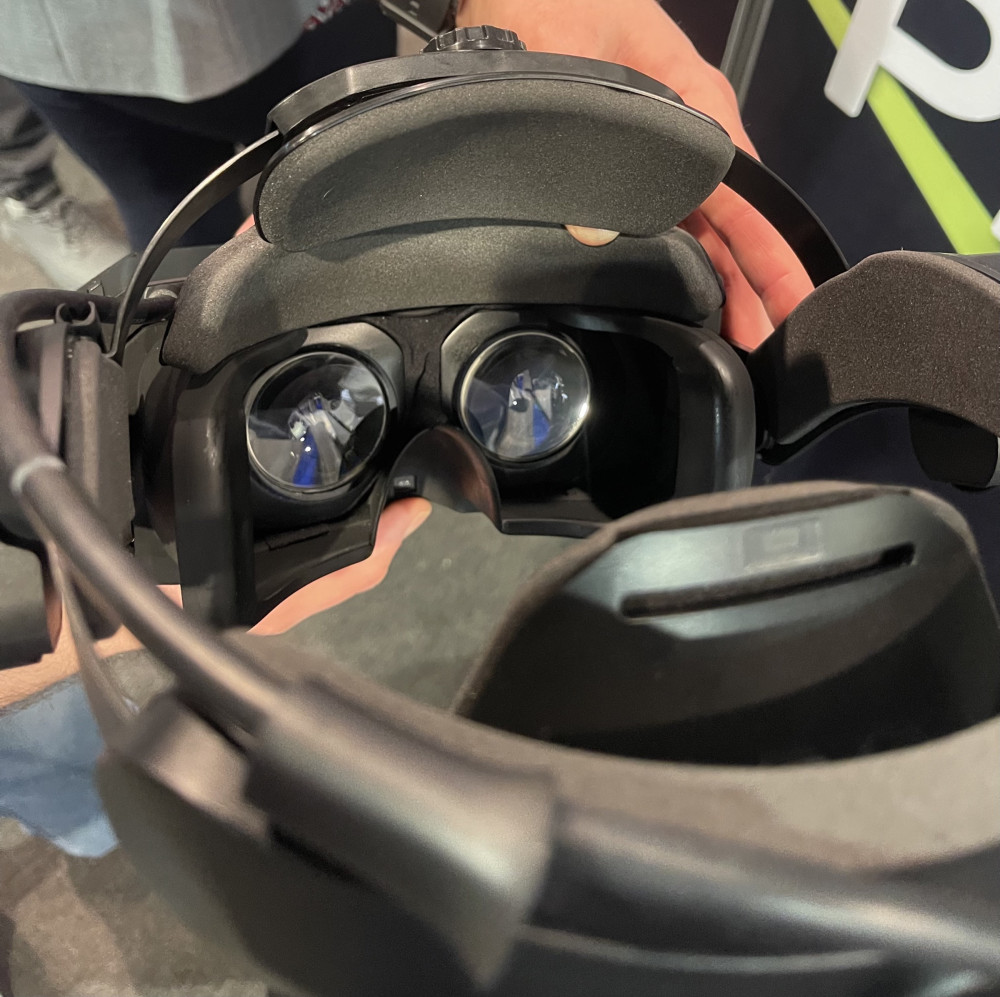
The Pimax Super Crystal with miniLED LCD panels. Photo: FlatpanelsHD
QD-EL, also known as NanoLED
At CES last year, Sharp showcased a QD-EL prototype, also referred to as NanoLED by quantum dot pioneer Nanosys. This year at CES 2025, we had the opportunity to examine a QD-EL prototype from China's TCL.
TCL's QD-EL delivered stunning OLED-like picture quality with deep blacks, high contrast, high resolution, fast response times, and beautiful colors covering over 85% of Rec.2020.
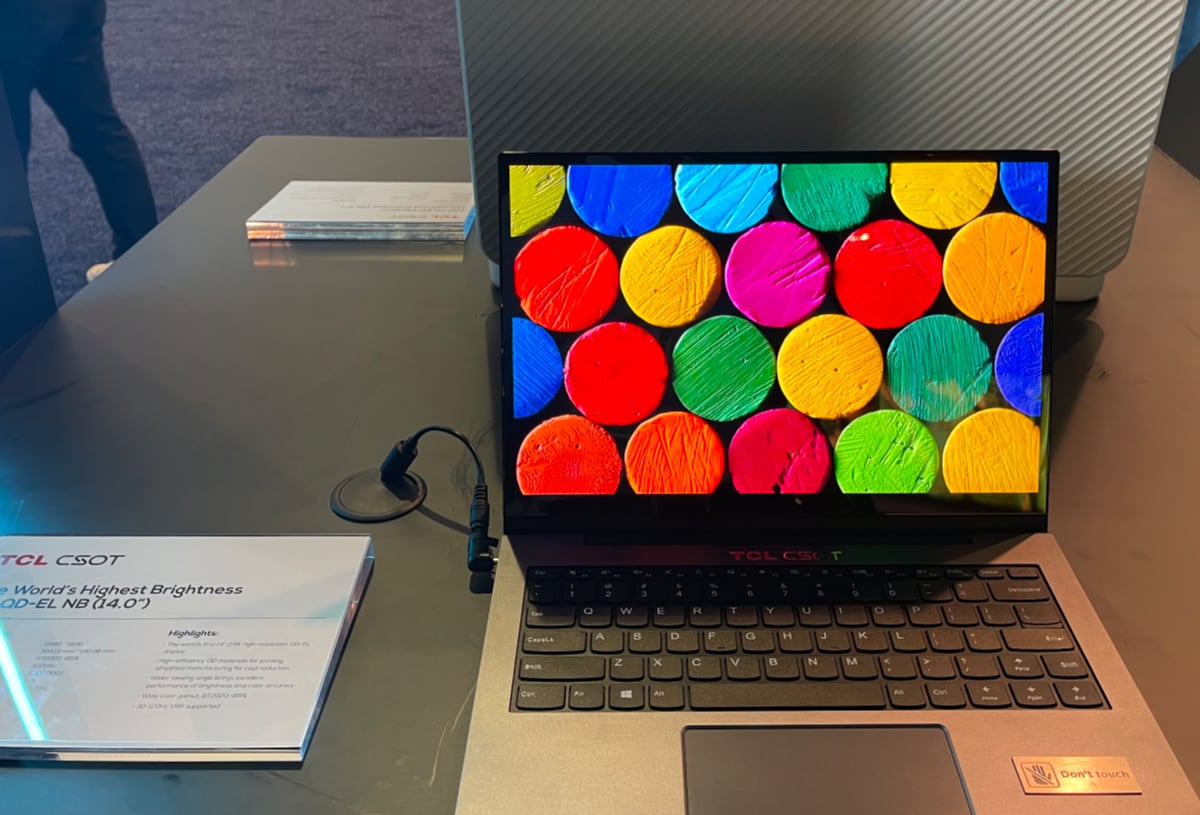
TCL's QD-EL display prototype. Photo: FlatpanelsHD
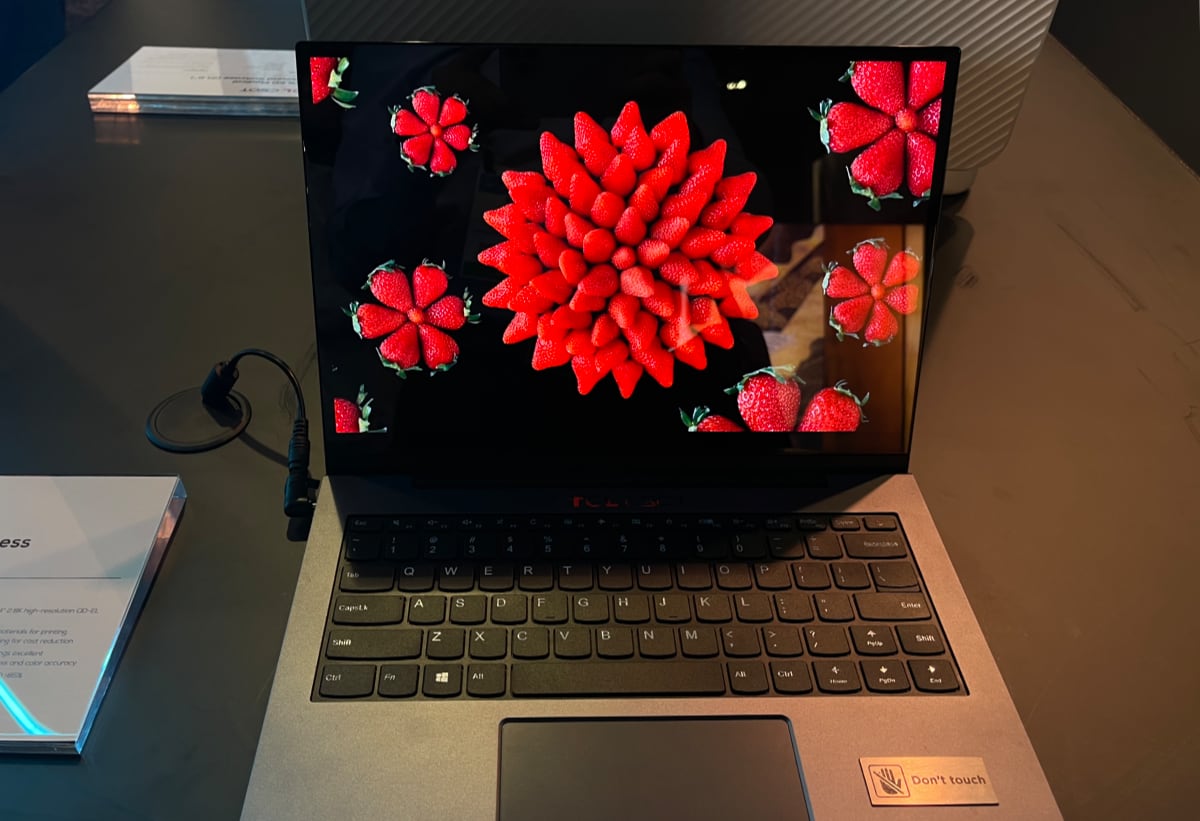
TCL's QD-EL display prototype. Photo: FlatpanelsHD
The allure of QD-EL is that it no longer requires a light source such as light emitting diodes. Instead, electricity is applied directly to the quantum dots that light up in red, green and blue, action as pixels. This allows displays to be more or less fully inkjet printed, potentially lowering production costs for cheaper displays (or increasing manufacturers' margins).
Nanosys has repeatedly stated the technology "it is closer than many people realize". When I suggested 2030 as a realistic timeframe during our CES discussion, Nanosys' Jeff Yurek, Head of Marketing, did not dismiss the idea.
However, TCL's prototype is not yet commercially viable due to its use of cadmium, which is banned in many regions. Either the panel technology or regulations will need to change before mass production becomes feasible.
Despite this, QD-EL holds great promise, with Nanosys claiming that the technology can scale from tiny to very large displays.
Ultraviolet micro-LED with QD
Despite Apple reportedly abandoning its micro-LED project and Samsung struggling to reduce production costs for large micro-LED TVs, the display technology continues to show promise, with different approaches that could make it reality.
In its simplest form, micro-LED uses red, green and blue (RGB) sub-pixels to produce an image. This is the method Samsung employs in its micro-LED TVs – the first true LED TVs – but we all know how incredibly expensive they are and how they are assembled from smaller modules with visible seams. This should not be confused either with Samsung's new micro-LED LCD TV showcased at CES 2025.
Still, in the near term, micro-LED could improve display quality in other product categories such as smartwatches. At CES 2025, we saw a micro-LED prototype smartwatch from Samsung Display with over 4,000 nits of brightness. It was stunning and left us wishing for micro-LED in our next smartwatch – especially for outdoor use.
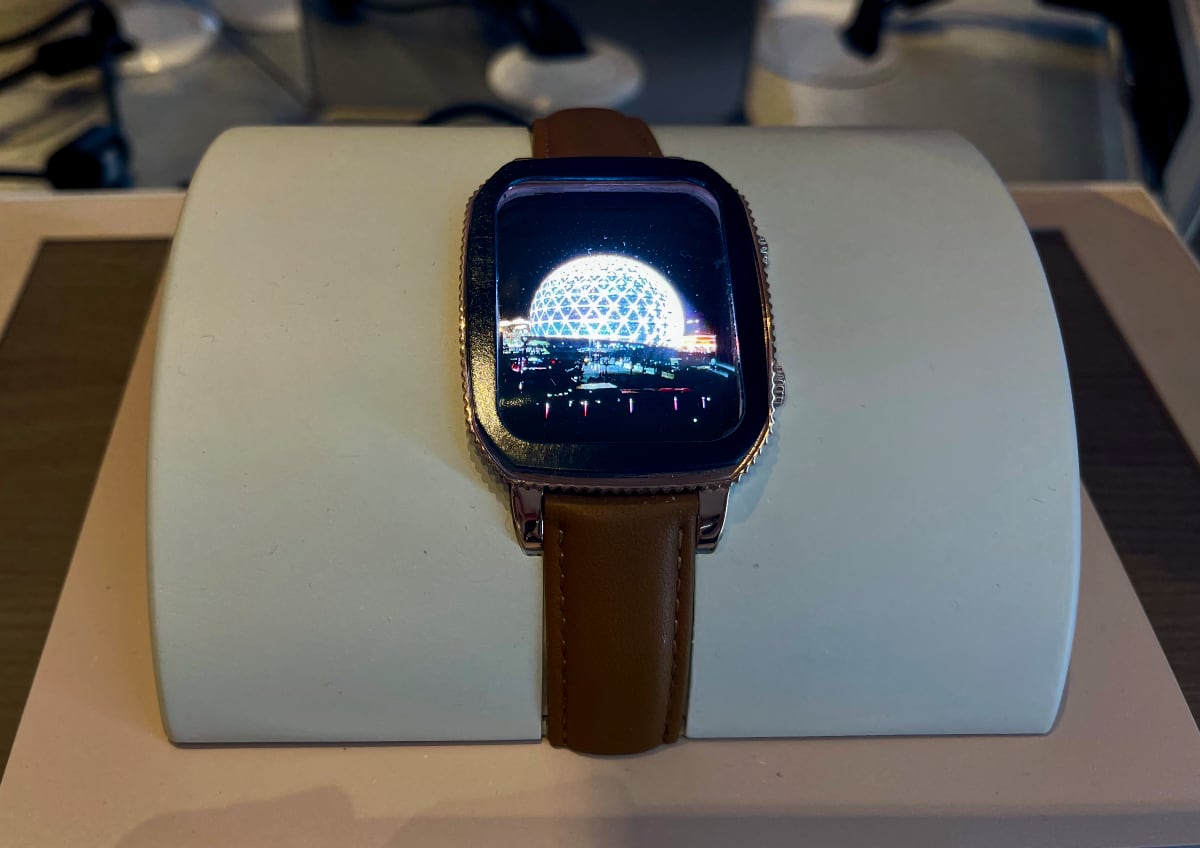
Samsung Display's 4000-nit micro-LED display for smartwatches. Photo: FlatpanelsHD

Samsung Display's 4000-nit micro-LED display for smartwatches. Photo: FlatpanelsHD
Another approach is to combine micro-LED with quantum dots, either by using blue micro-LEDs with quantum dot converters for red and green – similar to how QD-OLED utilizes blue OLED with quantum dots – or by employing ultraviolet micro-LEDs with quantum dot converters for red, green and blue. This works because ultraviolet light has higher energy than blue, allowing efficient down-conversion to visible colors, while also being safe to the eyes due to the conversion and blocking filters, according to Nanosys.
At CES 2025, we saw a prototype of this exact approach when visiting Nanosys. The technology does not yet have an official name so let us call it ultraviolet QD micro-LED, or QD-UV micro-LED. The prototype seen below delivered 1000 nits, which looked very bright in the dark room, but Nanosys expects it to reach 3000 nits in the near future.
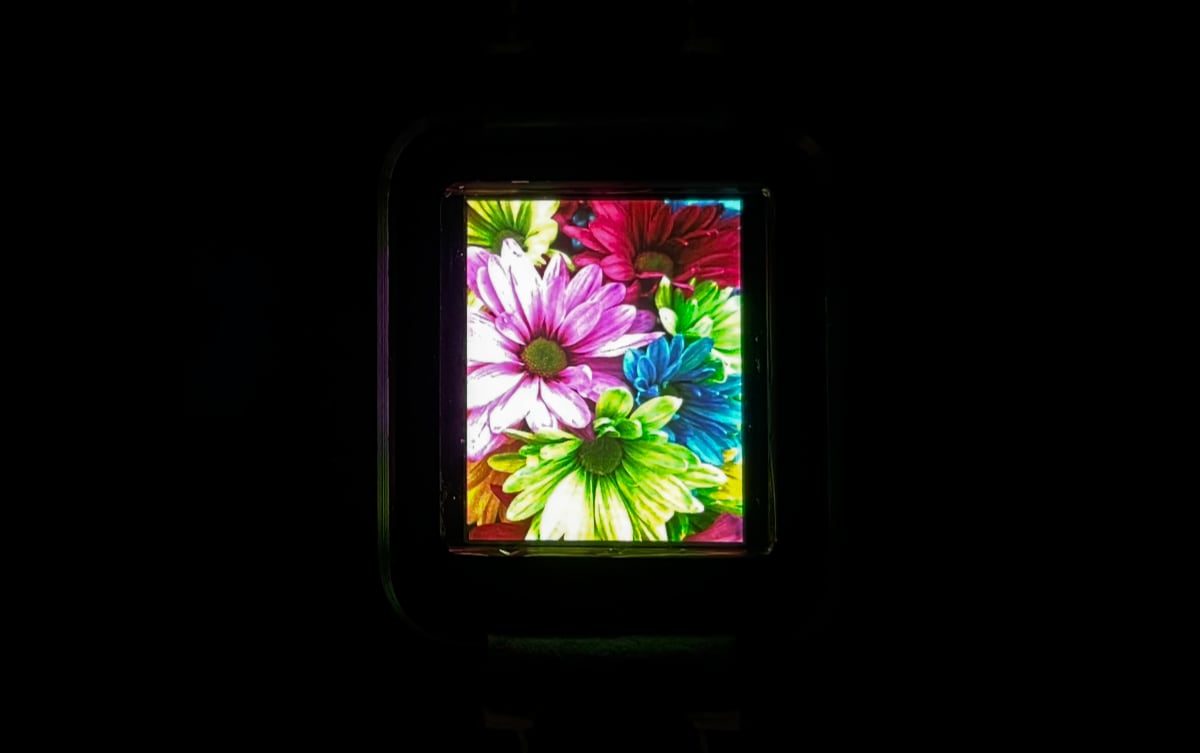
Nanosys' ultraviolet QD micro-LED display prototype. Photo: FlatpanelsHD
An interesting detail is that QD-UV micro-LED has four sub-pixels per pixel, though only three are used. The fourth is included solely to compensate for potential pixel defects during production, which remains a major challenge when transferring micro-LEDs from the wafer to the display substrate.
The prototype impressed us with its high contrast, vibrant colors and intense brightness, making it a display technology worth keeping an eye on in the coming years. Nanosys confirmed that the prototype is already cadmium-free, removing a significant regulatory hurdle to production.
Whether QD-UV micro-LED will reach commercialization remains uncertain – Nanosys does not manufacture displays so it will require industry partners – but like QD-EL, it holds significant promise. Still, it is not just about making it work; it also has to compete with the rapidly advancing OLED technology, which continues to replace LCD step by step across categories.

